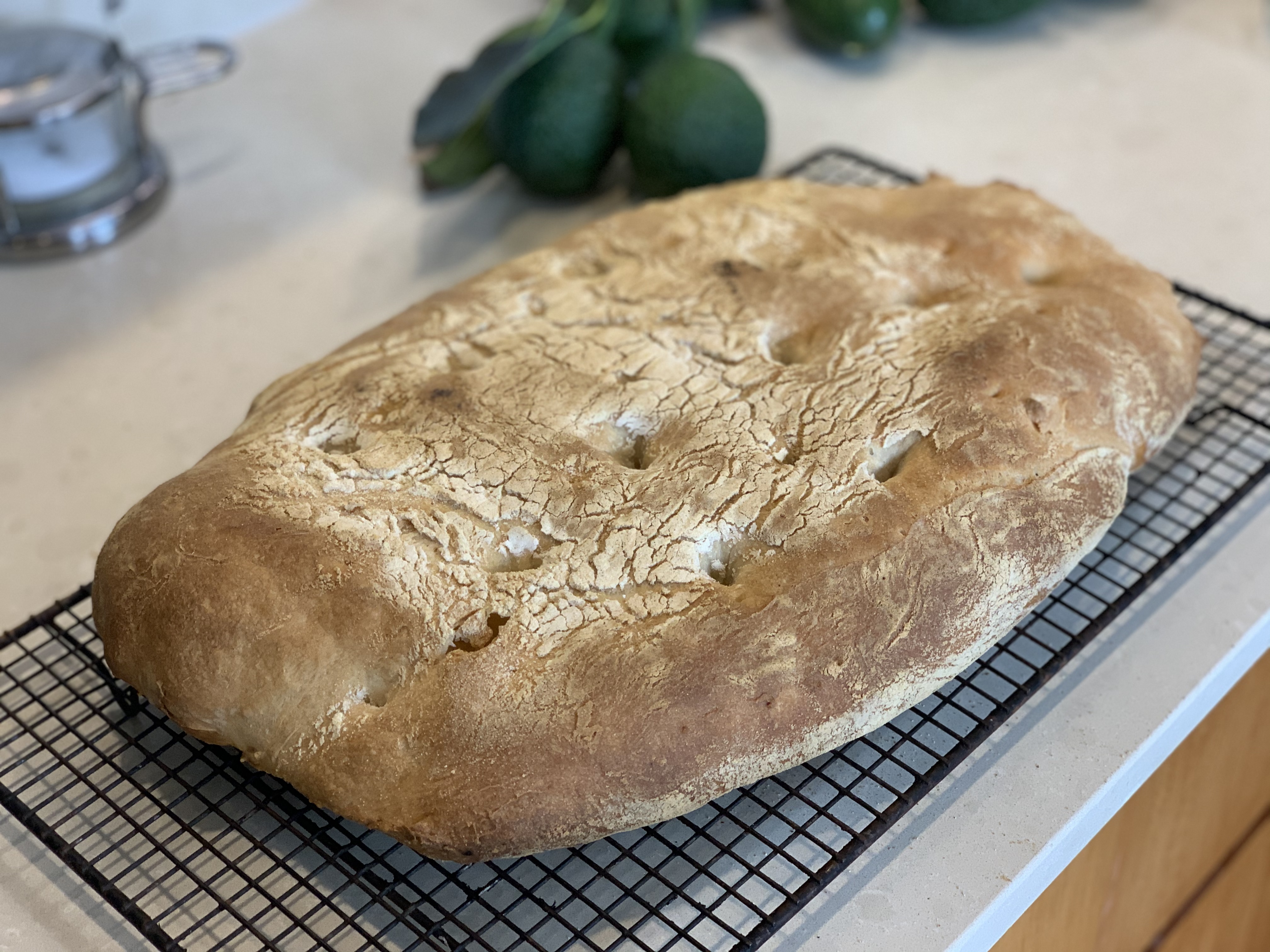Traditional Italian bread made the authentic way with a biga, or starter.
Ciabatta
This ciabatta recipe crafts the loaf the traditional Italian way using a biga starter. The resulting bread has a crisp crust with an airy crumb inside. Sliced ciabatta is perfect on its own or for making sandwiches. The dough can be tricky to handle correctly as it’s incredibly wet and will stick to everything it comes in contact with. But don’t worry, as you make the dough again and again, you’ll become practiced in how to handle it.
Ingredients
- 1 tsp active dry yeast
- 76 ml warm milk
- 285 ml water, at room temperature (if using a food processor, use cold water)
- 15 ml olive oil, plus more for the bowl
- 500 g biga, rested for 12 hours
- 500 g unbleached all-purpose flour, plus more for the work surface
- 15 g salt
- Cornmeal
Directions
- Stir the yeast into the milk in a mixer bowl; let stand until creamy, about 10 minutes. Add the water, oil, and biga and mix with the paddle until blended. Mix the flour and salt, add to the bowl, and mix for 2 to 3 minutes.
- Change to the dough hook and knead for 2 minutes at low speed, then 2 minutes at medium speed. The dough will be very sticky. Knead briefly on a well-floured surface, adding as little flour as possible, until the dough is still sticky but beginning to show evidence of being velvety, supple, springy, and moist.
- Place the dough in an oiled bowl, cover with plastic wrap, and let rise at room temperature until doubled, about 1 1/4 hours. The dough should be full of air bubbles, supple, elastic, and sticky.
- Turn the dough onto a generously floured surface and cut it into 4 equal portions. Roll each portion into a cylinder, then stretch each cylinder into a rectangle about 10 by 4 inches.
- Generously flour 4 pieces of parchment paper placed on peels or upside-down baking sheets. Place each loaf, seam side up, on a piece of parchment. Dimple the loaves vigorously with your fingertips or knuckles so that they won’t rise too much.
- Cover the loaves loosely with damp towels and let rise until puffy but not doubled in size, 1 1/2 to 2 hours.
- About 30 minutes before baking, preheat the oven to 425°F (220°C) and slide 2 baking stones on the center rack to heat.
- Just before baking the bread, sprinkle the stones with cornmeal. Carefully invert each loaf onto a stone. If the dough sticks a bit to the parchment, just gently work it free from the paper.
- Bake the ciabatta for a total of 20 to 25 minutes, spraying the oven 3 times with water in the first 10 minutes. Transfer the loaves to wire racks to cool.
- Weigh the ingredients. If you pack flour into the measuring cup, it will come out weighing substantially more than what you expect or that the recipe intends.
- Have a bowl of water nearby when you’re shaping the dough. Wet dough won’t stick to wet hands, so dip your hands in the water before you scoop up the dough.
- Do NOT worry if the loaves look flat and unpromising. They will rise more in the oven.
- This recipe should ideally be made in a stand mixer. It can be made in a food processor. And while folks have made it by hand, it’s not recommended.
- Follow the recipe. It’s written by a baker with untold experience baking bread and seeing home cooks through the inevitable learning curve that comes with handling Italian bread dough, which is much different and wetter to work with than the standard American bread dough.
- Before you make this authentic ciabatta recipe, understand that the dough can be tricky to handle correctly. It’s wet. Incredibly wet. It will stick to your hands. It will stick to your work surface. It will stick to everything it comes in contact with. That’s okay. Don’t add extra flour or you’ll get disappointing results. Just rest assured that, as you make the dough again and again, you’ll become practiced in how to handle it.

